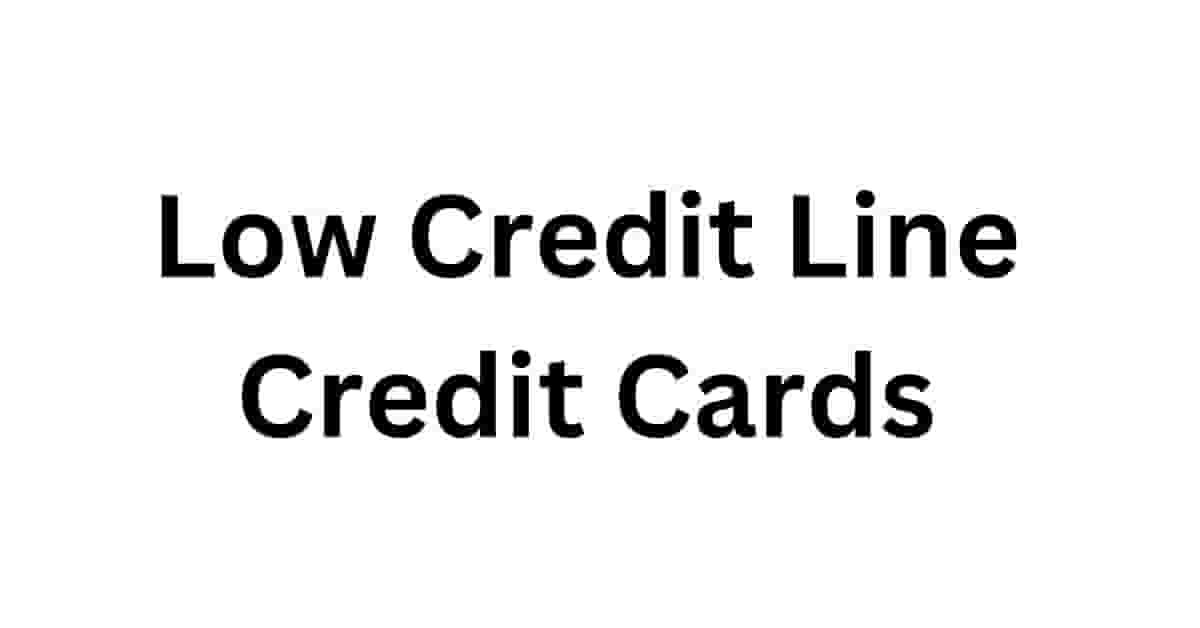In today’s financial landscape, credit cards are more than just a convenience—they’re essential tools for building credit, managing expenses, and achieving financial goals. For individuals new to credit or those looking to rebuild their credit history, low credit line credit cards offer a practical starting point. Let’s explore what these cards are, their benefits, and how to use them effectively.
Understanding Low Credit Line Credit Cards
What Are They?
Low credit line credit cards, often referred to as low-limit or starter credit cards, come with a lower credit limit compared to standard cards. They’re typically designed for:
-
Individuals with limited or no credit history.
-
Those aiming to rebuild their credit.
-
People seeking to manage spending more effectively.
Why Do They Exist?
Credit card issuers offer these cards to mitigate risk. By providing a lower credit limit, they can extend credit to individuals who might not qualify for higher-limit cards due to their credit profiles.
Benefits of Low Credit Line Credit Cards
-
Building or Rebuilding Credit
Using a low-limit card responsibly—making timely payments and keeping balances low—can help establish or improve your credit score.
-
Encouraging Financial Discipline
A lower limit naturally curbs excessive spending, promoting better budgeting habits.
-
Easier Approval
These cards often have more lenient approval criteria, making them accessible to a broader range of applicants.
-
Potential for Upgrades
Demonstrating responsible use can lead to credit limit increases or eligibility for cards with better rewards and terms.
Key Features to Consider
-
Interest Rates (APR): While some low-limit cards offer competitive rates, others might have higher APRs. Always review the terms before applying.
-
Fees: Be aware of annual fees, late payment fees, and foreign transaction fees. Some cards, especially secured ones, might have minimal or no annual fees.
-
Rewards Programs: Some low-limit cards offer cashback or points on purchases, though these programs might be less generous than those on premium cards.
-
Security Deposits: Secured credit cards require a refundable deposit, which typically sets your credit limit.
Choosing the Right Low Credit Line Credit Card
-
Assess Your Needs
Determine what you want from the card—be it building credit, earning rewards, or managing expenses.
-
Compare Options
Look at various cards’ terms, fees, and benefits. Consider both secured and unsecured options.
-
Check Eligibility Requirements
Ensure you meet the card’s criteria, such as income requirements or credit history.
-
Read the Fine Print
Understand all terms and conditions to avoid surprises.
Tips for Responsible Usage
-
Pay On Time: Timely payments are crucial for building credit and avoiding late fees.
-
Keep Balances Low: Aim to use less than 30% of your credit limit to maintain a healthy credit utilization ratio.
-
Monitor Your Account: Regularly check statements for errors or unauthorized charges.
-
Avoid Unnecessary Applications: Each credit inquiry can impact your score; apply only when necessary.
Improving Your Credit Score with a Low-Limit Card
-
Consistent Payments: Regular, on-time payments demonstrate reliability.
-
Limit Utilization: Keeping your balance low relative to your limit shows responsible credit management.
-
Length of Credit History: Keeping the account open over time can positively affect your credit score.
-
Diversify Credit Types: Over time, consider adding different types of credit, like installment loans, to your profile.
Overcoming Challenges
Low Credit Limit
If the limit feels restrictive:
-
Request an Increase: After several months of responsible use, ask your issuer for a higher limit.
-
Apply for Additional Credit: Consider adding another card to increase your total available credit, but do so cautiously.
High Fees
Some low-limit cards come with high fees:
-
Shop Around: Compare cards to find ones with lower fees.
-
Negotiate: Sometimes, issuers are willing to waive or reduce fees upon request.
Real-Life Success Stories
Many individuals have successfully used low-limit credit cards to improve their financial standing. For instance, some have transitioned from secured to unsecured cards within a year, while others have seen significant credit score improvements by maintaining low balances and making timely payments.
Common Misconceptions
-
“Low-limit cards don’t help build credit.” False. Responsible use of any credit card, regardless of limit, contributes to your credit history.
-
“Secured cards are only for people with bad credit.” Not necessarily. They’re also excellent tools for those new to credit.
-
“Closing a low-limit card improves my credit.” Closing accounts can reduce your total available credit and potentially harm your credit utilization ratio.
FAQs
Q: Can I increase my credit limit over time?
A: Yes. Demonstrating responsible use—timely payments and low balances—can lead to credit limit increases.
Q: Are there rewards programs for low-limit cards?
A: Some low-limit cards offer rewards, though they might be less generous than those on higher-tier cards.
Q: What’s the difference between secured and unsecured low-limit cards?
A: Secured cards require a refundable deposit, which sets your credit limit. Unsecured cards don’t require a deposit but might have stricter approval criteria.
Q: How long does it take to improve my credit score with a low-limit card?
A: With consistent, responsible use, you might see improvements in as little as six months.
Q: Will applying for a low-limit card hurt my credit score?
A: The application results in a hard inquiry, which can slightly impact your score temporarily. However, responsible use of the card can lead to long-term improvements.
Conclusion
Low credit line credit cards serve as valuable tools for those looking to build or rebuild their credit. By understanding their features, benefits, and best practices for use, you can navigate your financial journey with confidence and set the foundation for a robust credit profile.

